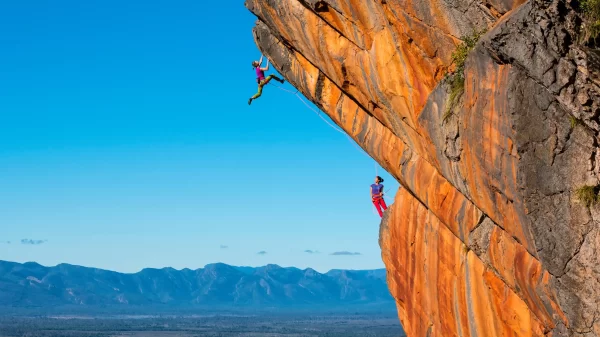These monumental structures by Glasgow sculptor Andy Scott, depicting two mythical kelpies, were officially unveiled on 8 July 2015. At 30 metres high, they are a third taller than the Angel of the North, and made from 30,000 pieces of structural steel.
In Scottish folklore, kelpies are shape-shifting water spirits of lochs, rivers and other bodies of water. They are said to be powerful, horse-like creatures that are also able to take human form. There are other similar water spirits in Scottish folklore, such as the shoopiltee and the nuggle in the Shetlands and Orkneys; the Loch Ness monster is also often identified as a kelpie. In most tales, kelpies are said to ensnare human victims, particularly children, taking them into the water and then devouring them. Indeed, it is suggested that the myth was invented to protect children from drowning.
Kelpies are mentioned in one of Robbie Burns’s poems, Address to the Devil (1786):
When thowes dissolve the snawy hoord,
An’ float the jinglin icy-boord,
Then water-kelpies haunt the foord
By your direction,
An’ nighted trav’lers are allur’d
To their destruction
Kelpies have often been portrayed in art, in both their human and horse forms. Though traditionally, kelpies take a male human form, this painting by Herbert James Draper portrays a kelpie as a beautiful and alluring woman.
While it depicts kelpies, Scott’s sculpture also commemorates the working horses that were used for pulling barges along the canal, and the industrial history of Falkirk and the surrounding area. Legend has it that if a kelpie could be captured – with a halter marked with a cross – then it could be used to carry out heavy labour.
Scott’s kelpies were commissioned by Scottish Canals and stand in an ecopark, the Helix, on the canal link between the Forth and Clyde canal and the River Carron. The entire project took over 10 years to realise; Scott created two sets of three-metre high models that were then laser-scanned and scaled up to create the 30-metre sculptures. These 1:10 scale maquettes are also on display nearby.
These iconic sculptures have become one of Scotland’s most popular tourist attractions, with almost one million visitors in the first year following the opening of the park.
You can see more public sculpture on Art UK here.






































